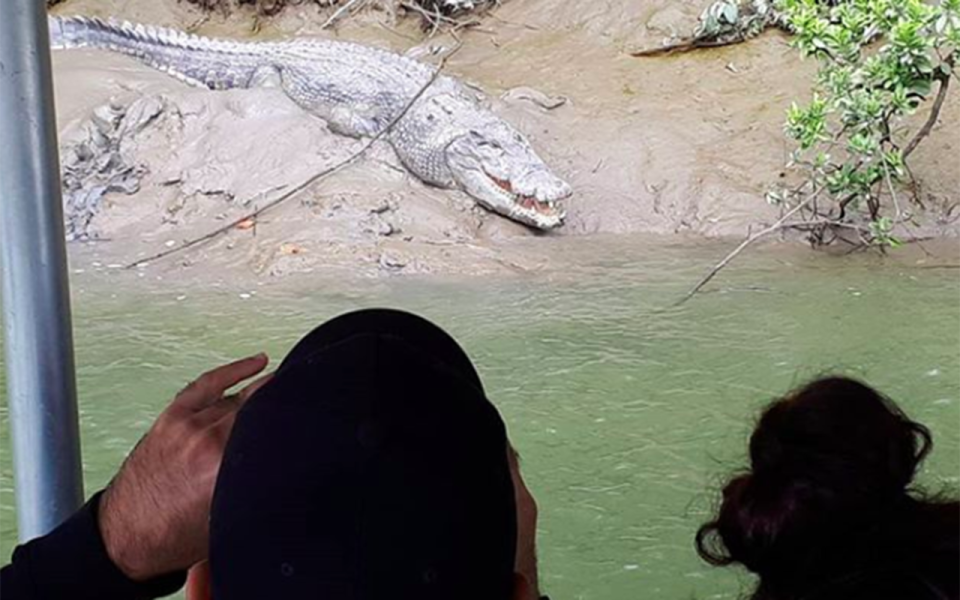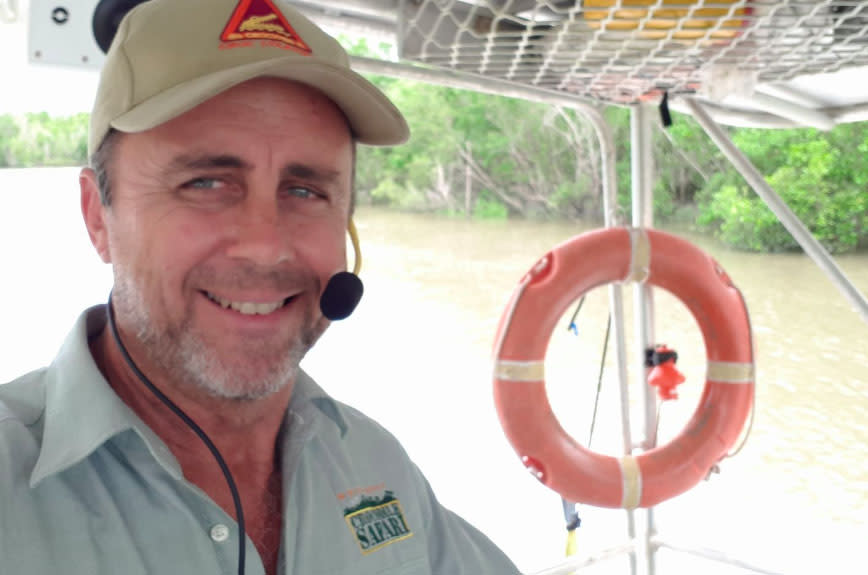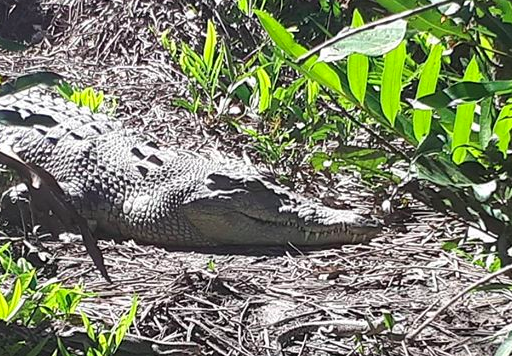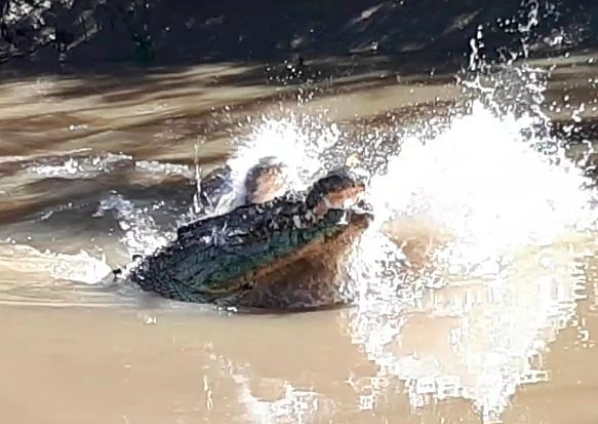Meet the man who gets up close and personal with Australia's biggest crocodiles
Mark Norman has become so familiar with some of the crocodiles he sees along the banks of the Queensland’s Proserpine River that he’s given them nicknames.
There’s Big Boy Fatguts, Big Boy Boofhead, Ginger, Mum and The Girls – the regulars he sees in his job as a crocodile safari guide along one of the country’s most heavily croc-populated rivers in Whitsundays.
Every day he gives tourists both local and international the unique chance to get up close and personal with saltwater crocs as they go about their business in their natural habitat.
It’s a job he’s been doing now for more than 15 years, and he considers some of these crocs almost as part of his “circle of friends.”


“It’s hard to single out one thing,” the Airlie Beach-based croc expert says when asked to name a highlight of his intriguing career.
“I’m in the incredible position of being able to spend a lot of time with crocs on a daily basis and there are some that I have been observing for 15 years. You almost begin to feel like they’re your mates.”
But how does a bloke from the Sydney beachside suburb of Manly end up taking tourists on croc-spotting tours of Australia’s north?
“I was looking for a bit of adventure,” the Whitsunday Crocodile Safari guide and keen barramundi fisherman says.
A post shared by Mark Norman (@mark.normancrocguide) on Jun 27, 2018 at 10:40pm PDT
“I’d always had an interest in the wildlife up north. I started out in Cairns, was an eco-tourism guide on Cape York, and I was also a snake-catcher for quite a long time.
“Then this job on the river became available; there’s only one operator on the Proserpine and I’d always been very keen to find myself working around crocs.
“Crocodiles are one of those creatures that I think most people are fascinated with; they’re a large predator animal and they’re an iconic part of our rivers in the north. A lot of people come up here to get a look at a croc and get that taste of adventure.”
Demand for croc tours are huge right across the top end of Australia, Norman says, with a mix of local, national and international tourists signing up. He says croc tours differ in style from state to state and region to region.
“We don’t feed crocs in Queensland, because it’s illegal,” he says. “What we do is an educational, wild crocodile experience – taking people out onto the river so they can get up close.”
Not too close, though – the boat can sit within a 10-metre range of big crocs sitting undisturbed on the river banks, but safari guest safety is always the highest priority.

“The Proserpine has an incredibly healthy saltwater croc population,” Norman says.
“We’re home to about 150 big crocs, and many, many breeding females with lots of babies around.
“You’ve got a pretty good strike-rate of seeing crocs on any given day. In 18 years of the tour, we’ve only ever not seen crocs a handful of times.”
Two crocs in vicious territorial battle
In one day, safari guests can see up to 19 big crocs and up to 60 or 70 small ones in a three-kilometre stretch.
One recent highlight was watching two big males in a territorial face-off which ended up in a half-hour head-butting session right alongside the boat.
“That’s the sort of thing you don’t always get the chance to see,” he says. “That day people got to watch this incredible display. That was special.”

Norman says the key to being a good croc guide is first and foremost a passion for the subject – to be able to educate and inform tourists, and perhaps dispel a few myths along the way.
“It’s not about making up sensational stories,” he says.
“We don’t want to stir up the fear factor. The longer you spend around these animals, the more you get to understand their behaviour.
“I’ve been fishing around crocodiles for 20, 25 years and working with them on and off over the last 15 years and I’ve never had a problem with a croc.”
A post shared by Mark Norman (@mark.normancrocguide) on Jun 30, 2018 at 10:37pm PDT
Norman says there’s no arguing against the fact that crocs can potentially be very dangerous.
“But if you show them some respect and work in a safe manner, you reduce that danger greatly,” he says.
“It all comes down to how you present yourself when you’re in croc country. The people who do get attacked by crocodiles in Australia have usually put themselves in danger.”

One of Norman’s least favourite phrases, he says, is “croc-infested waters”.
“Infested makes it sound like they shouldn’t be there – that there’s some kind of plague happening,” he says.
“There are as many crocs in the river as there should be, and rivers are their natural habitat, so we prefer to say ‘croc-inhabited’. It’s a lot fairer to the crocodile.”


